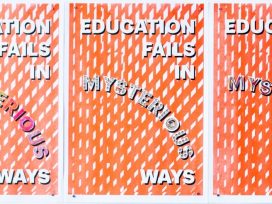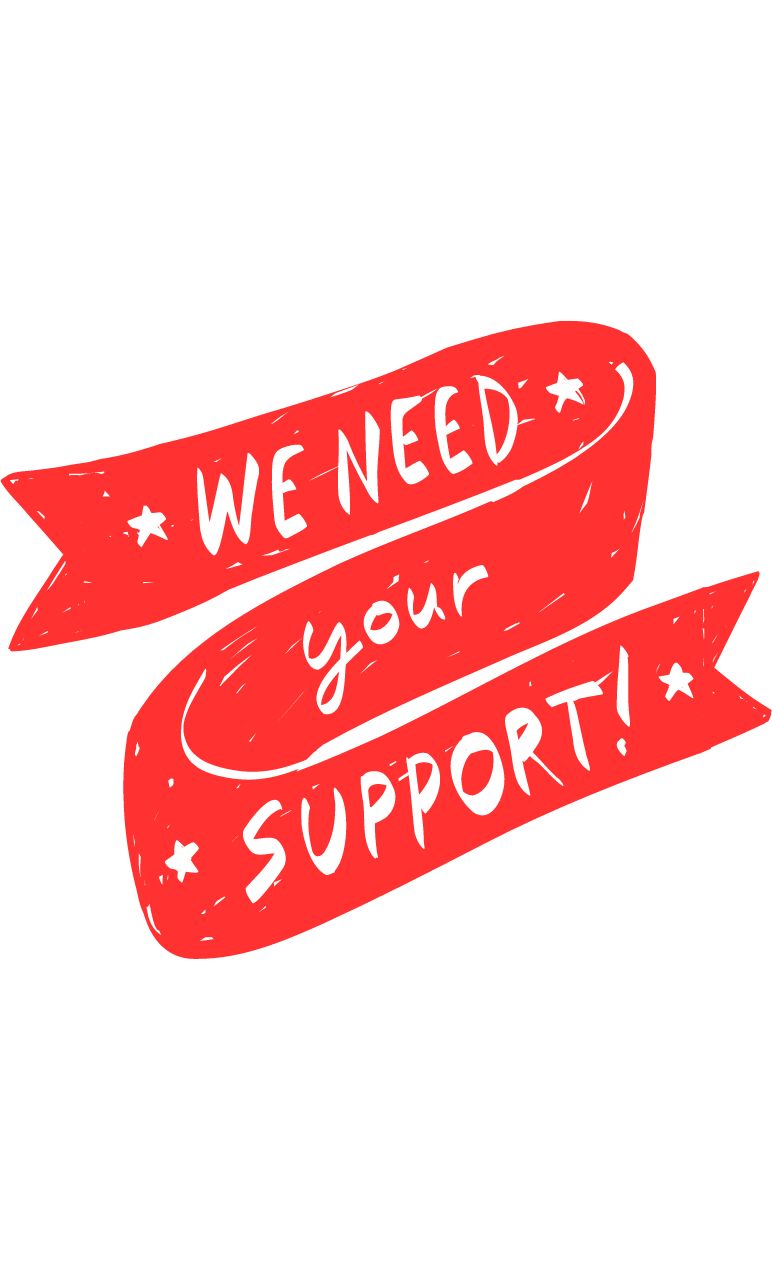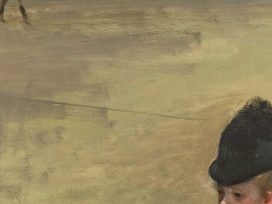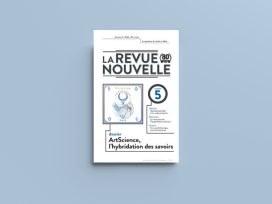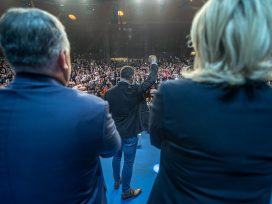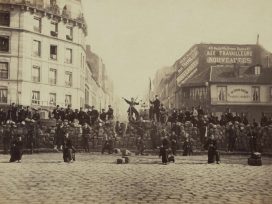In an anniversary issue looking back on three decades of art and cultural criticism, Austrian magazine springerin brings together companions of the magazine in a ‘reflexive self-ethnography’. Artists and writers reflect on the hopes and ideals of the mid-1990s – particularly regarding the promises of the then-novel internet and its potential for critique – and the ways in which many of those hopes have been disappointed, if not shattered.
Philosopher Boris Buden sets the bleak tone of the issue, homing in on a despairing entry by artist and regular springerin contributor Brian Holmes in Nettime after Donald Trump’s re-election: ‘The issues that have driven this mailing list for more than 30 years lie shattered before us. The chance of a more open and just world, which we all believed in one way or another, has been swept away by a gigantic wrecking ball.’
Nettime and springerin, Buden writes, shared not just this idealism but also the experience of living in a ‘common world and a common historical epoch’. Central to both projects was an activist ethos that considered culture to be ‘everywhere’ and ‘everything’ to be culture – ‘including history’. Artists, theorists and activists had the sense of belonging to ‘to an elite of historical progress, if not to an avant garde.’
In retrospect, writes Buden, this was simplistic progressivism, an ideological ‘creature of its time’ rooted in a belief in benevolent ‘westernization’. While art, theory and activism often succeeded in ‘changing the world for the better’, they could not prevent ‘the world changing for the worst’.
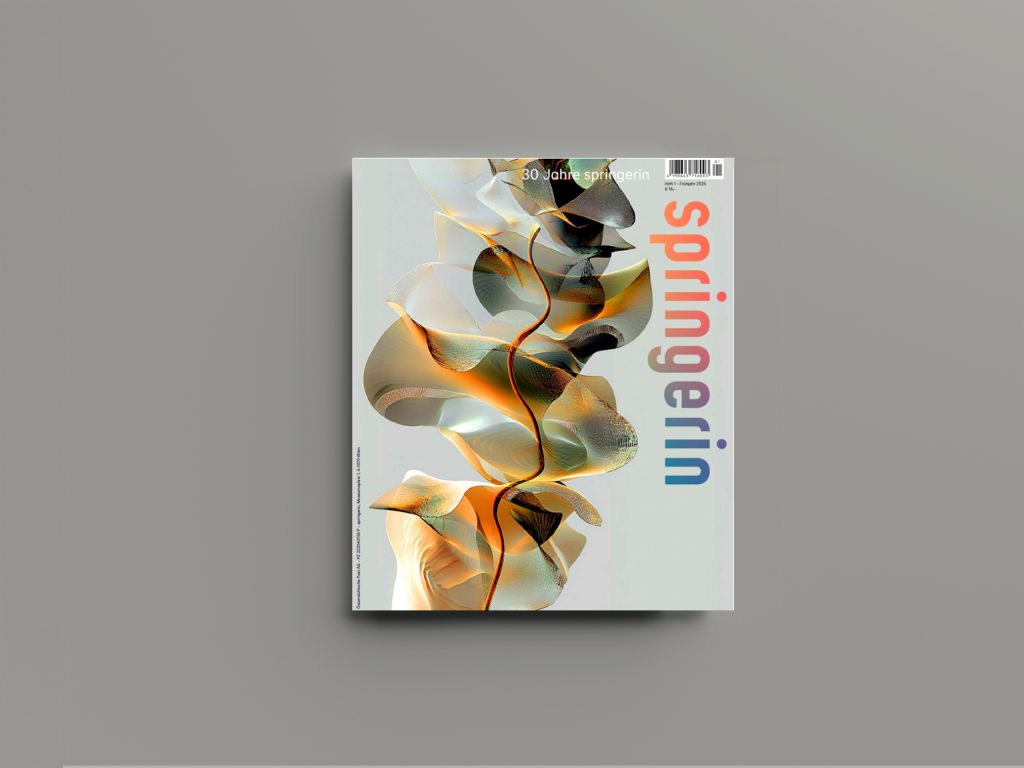
springerin 1/2025
When the first issue of Springerin appeared in 1995, the wars in the Balkans were raging a few hundred kilometres south of Vienna; in July, the Srebrenica massacre took place.
But progressives, claims Buden, had a blind spot for ethnic cleansing and nationalist hatred; and so the wars were ‘Balkanized’ and ‘cut off from western civilization’. The figure of the ‘benevolent westernizer’ spawned a ‘swarm of monstrous creatures’ that thirty years later dominate the political stage.
Altered landscapes
Critic Yvonne Volkart fondly recalls the tech-optimism of springerin’s early years and how she used to fax in her contributions, which were put online in the ‘Net Section’.
‘The editors, their authors and artists worked on an aesthetic of adequate forms and media: not in an art-historical, let alone formalistic manner, but from a post-feminist, media-ecological, interdisciplinary and curatorial leftwing perspective coming from cultural studies.’
While new political frontlines appear to be producing a similar collective feeling among ‘artistic producers’ today, the landscape has altered. The old protagonists of ‘internet practices and online communities’ have moved on, many into artistic research:
‘Art is not just an artwork and criticism is not its afterthought, but both are jointly developed methods of searching, of wanting to know more precisely and sharing knowledge, of forming alliances – of being restless, of making restless. springerin does the same.’
Spaces of conflict
Art criticism has lost its combativeness, writes Süreyyya Evren in an article on pugnacious artistic practices. One example is a performance in which the artist Hiwa K. and philosopher Bakir Alo (both Iraqi-Kurdish) took part in a physical and verbal boxing match over the Kurdish question.
‘What Hiwa K. wanted to question is whether it is possible to talk about politically and culturally sensitive issues without conflict. In his opinion, normal conversation proved inadequate, and so the transition to wrestling seemed quite natural.’
Another example is Dana Hoey, who organized Thai boxing and jiu-jitsu courses for citizens and policewo*men to highlight police violence in Detroit (2017). ‘Her combat training for women’, writes Evren, ‘extends the metaphor of conflict to everyday problems and shows that art can actually empower disadvantaged people and need not be limited to criticizing institutional power dynamics.’ Criticism, Evren proposes, ‘should actively create spaces for today’s conflicts, make voices audible, and facilitate sensible discourse that exceeds the status quo’.
Places of protest
Artist duo Alice Creischer and Andreas Siekmann, professors at the Academy of Fine Arts Vienna, answer two questions posed by the editorial team: ‘What spaces will be open to the advanced sectors of the contemporary art scene in the future? Where and in what narrower milieu was the springerin project located three decades ago?’
Two instances of protest bracket their response: one early in 2025, when students of the Academy protested the imminent coalition in Austria between the conservative ÖVP and the far-right FPÖ; and the other 30 years ago, against the exhibition Deutschsein at Kunsthalle Düsseldorf, which aimed to raise German self-confidence in a national climate characterized by Nazi rallies and attacks on migrants.
The difference between the two lies in today’s perpetual live commentary in social media and the pressure and paranoia it creates, write Creischer and Siekmann. Noting that the academy is no longer the place for unpoliced expression, due to fear of repression from the far right, they turn to springerin to formulate another vision:
‘The editorial office could be a place where you practice being present, writing articles together, drinking coffee, making time, where you lose your smartphone, that is, where you learn to strike.’
Illusions of subjectivity
Hans-Christian Dany recalls his personal history with springerin and adjacent online movements, at the same time charting how the ideals of the cultural left have increasingly converged with the far-right, identitarian politics of antisemitism.
He chalks up this development to the critique of ‘objective truths’ formulated by thinkers like Donna Haraway, who coined the term ‘divine trick’ for illusions of objectivity. ‘At the end of the last millennium, when Haraway wrote this, exaggerated counter-truth seemed a suitable means of breaking patriarchal hegemonies.’ But in a decade of ‘the politics of affect’, it opens the door to what Adorno referred to as ‘crypto-antisemitism’ (Adorno).
With the debate on Israel and Palestine reaching new dimensions, Dany invokes the responsibilities of media-literacy vis-à-vis online imagery, particularly from an editorial standpoint: ‘Making magazines means writing the present’ – but not just the present one wishes to see.
Review by Kathrin Heinrich
